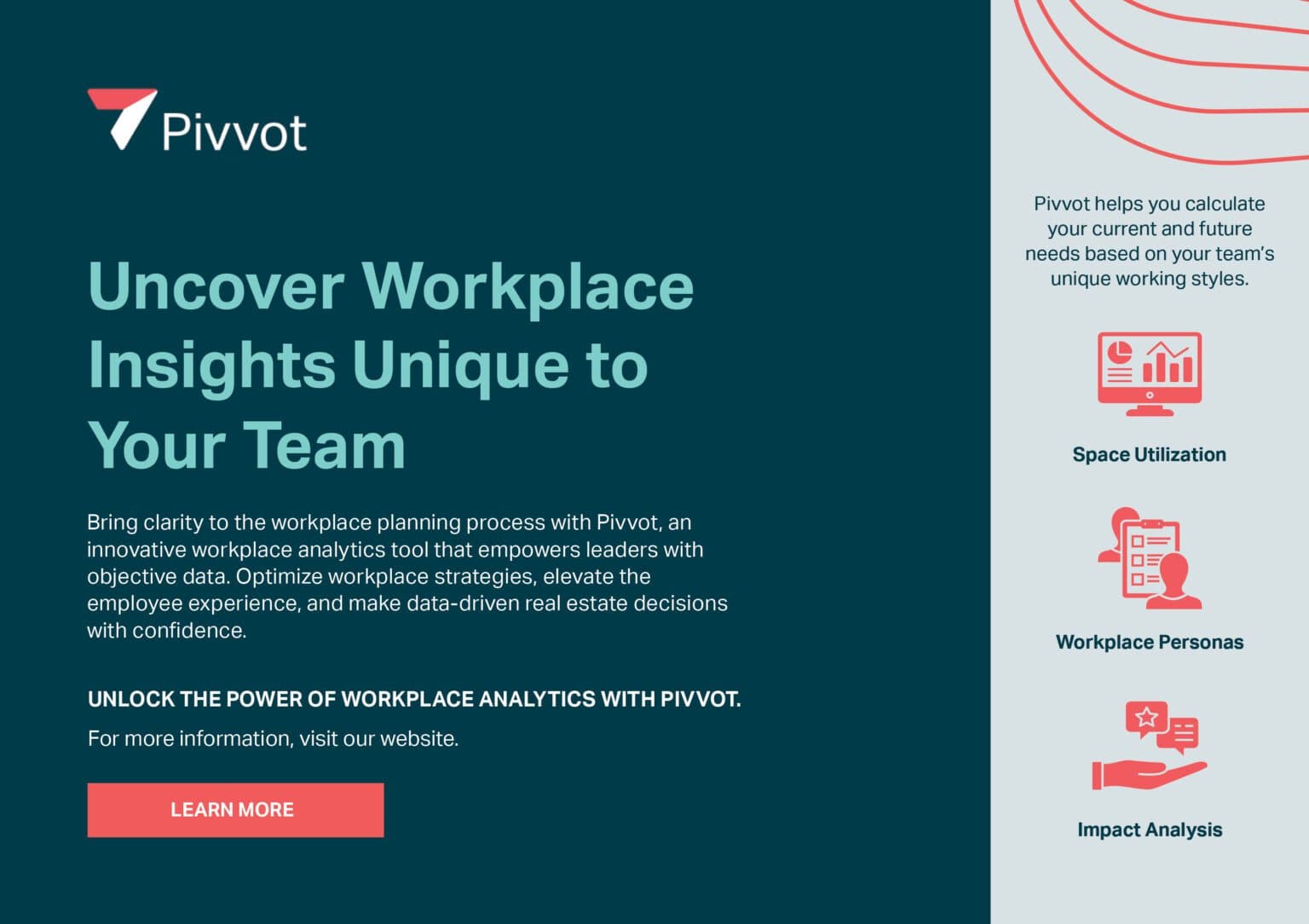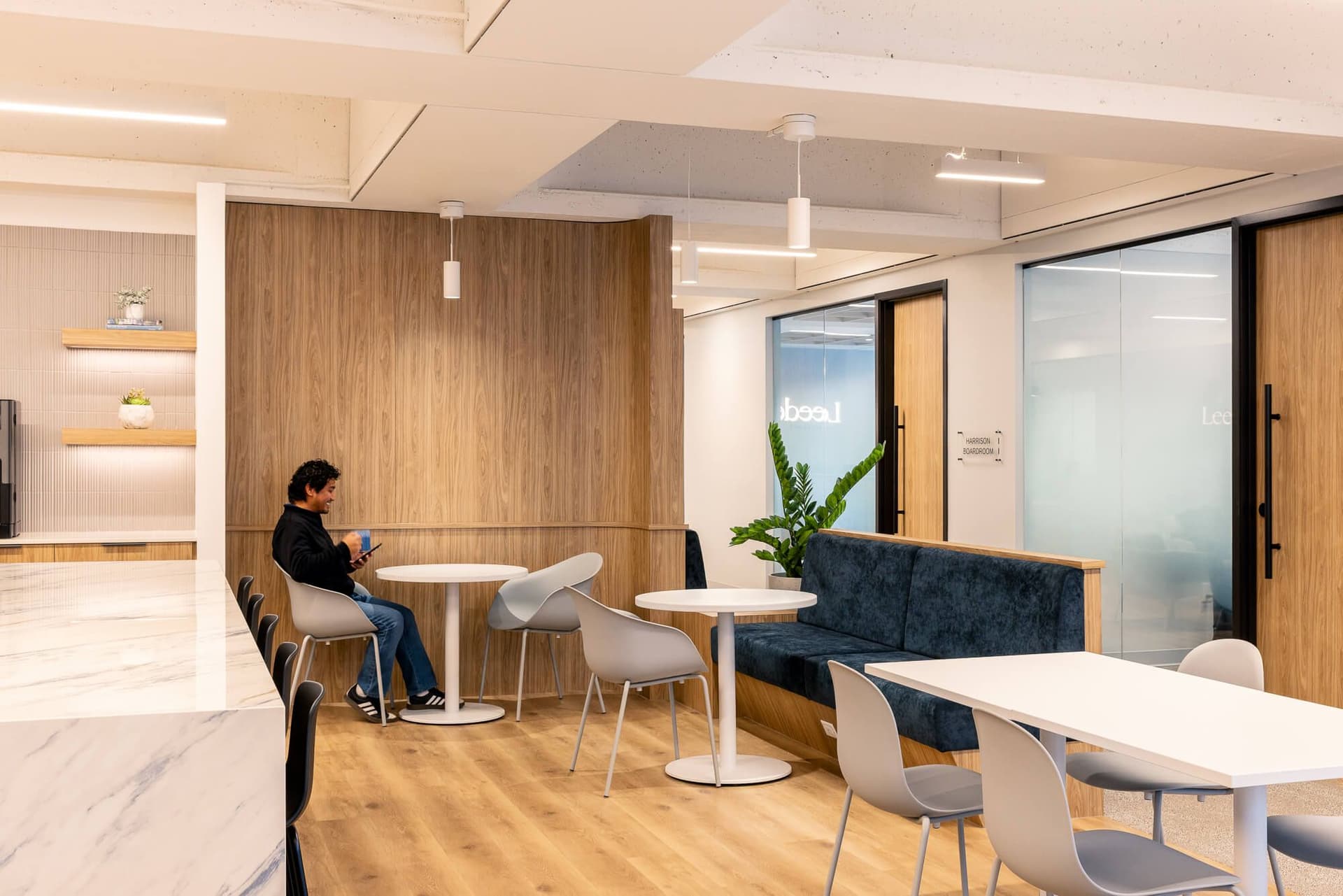The Hybrid Work Model: Ins and Outs of Creating an Effective Hybrid Workplace.
Learn what the hybrid work model entails and explore strategies to maximize its benefits, from space management to encouraging a RTO.
The shift towards hybrid work has transformed the modern workplace, blending the flexibility of remote work with the benefits of in-person collaboration. But what does a hybrid workplace model entail, and how can organizations maximize its benefits? In this article, we will explore the critical aspects of hybrid work, from defining the model and managing space to encouraging employees to return to the office.
Defining the Hybrid Work Model: What Does Hybrid Actually Mean?
The hybrid work model blends in-office and remote work, allowing employees to split their time between a central office and a home or remote location. It has evolved from a post-pandemic necessity into a preferred way of working, with many employees seeking more flexibility and autonomy in how they structure their workweek.
Hybrid work is not a one-size-fits-all solution; it varies across organizations depending on industry, company culture, and operational needs. Employers must balance maintaining productivity and fostering a healthy work culture that supports in-person collaboration and remote work independence. Flexibility, trust, and clear communication make this model effective.
According to the report
- Scheduled Hybrid: Employees have set days or times when they must work remotely or in the office.
- Flextime Hybrid: Employees can choose the hours they work, but they must still come into the office for specific meetings or collaborative sessions.
- Outcome-based Hybrid: Employees can work remotely if they meet specific performance criteria or project deadlines.
- Rotational Hybrid: Teams or departments rotate between working remotely and in the office.
- Role-based Hybrid: Only some types of employees have the option to work remotely, based on the nature of their job responsibilities.
- Location-based Hybrid: Employees in select geographic regions or metro areas can work remotely
In essence, various hybrid workplace models share a common trait: they offer a flexible approach, allowing employees to split their time between working remotely and from the office. Employees can choose where and when they work, with in-office time scheduled by days, teams, or as needed. This model integrates the benefits of in-person collaboration with the convenience of remote work.
How to effectively implement a hybrid work model
When considering hybrid work, organizations must define their goals. Why are you pursuing a hybrid model? Is it to drive productivity, attract or retain talent, or reduce office space? Each organization’s vision will vary, but the underlying principles of hybrid work should revolve around flexibility, adaptability, and alignment with both business goals and employee needs.
Here are a few considerations when implementing a hybrid model:
- Clear guidelines are essential in a hybrid setup. Employees need to understand what is expected of them regarding work hours, availability, communication, and performance. This clarity helps to avoid confusion and ensures that everyone is on the same page, which is key to making a hybrid model work smoothly.
- Investing in the right tools is critical. Hybrid work requires robust project management software, communication platforms, and video conferencing tools to ensure seamless connection. Additionally, providing tools that support asynchronous work and remote employee recognition can help create a more flexible and inclusive work environment.
- Continuous Improvement: Implementing a hybrid model is not a one-time task. It requires regular review and adaptation based on employee feedback, performance data, and changing business needs. By continuously refining the model, organizations can ensure it remains effective and beneficial for everyone involved.
Managing the Use of Space in a Hybrid Policy
One of the biggest challenges in a hybrid work environment is space management. Historically, office space was calculated based on headcount, with each employee having a dedicated workspace. However, hybrid work has shifted this dynamic. According to Colliers, the rise of hybrid work and hoteling—a system where employees reserve desks or workspaces as needed—has reduced the average square footage per employee. In fact, 44% of companies no longer provide a dedicated office or workspace for every employee. This shift has resulted in a 10% decrease in space allocation, dropping from 280 square feet to 250 square feet per employee compared to pre-pandemic figures.
With hybrid work, the demand for workspace is driven by a combination of workplace policy and employee work styles. While office attendance and headcount forecasts help us understand the organization’s demand for space, utilization data helps us understand how effectively the existing space supply meets that demand. More flexible policies can make predicting employee behaviour—and, by extension, space needs—challenging. Therefore, many organizations are implementing flexible workplace policies within specific parameters.
Companies need to move beyond headcount forecasting to manage space effectively in a hybrid environment. Office attendance data and utilization metrics are crucial for understanding how well existing space meets demand. Solutions like Aura’s workplace analytics tool, Pivvot, enable organizations to leverage their data to make informed office decisions. Pivvot’s occupancy sensors provide valuable insights such as:
- Which days are the busiest
- Average meeting sizes
- Usage of private offices
- Popularity of social spaces beyond lunch hours
- Departmental office attendance
- Utilization of large rooms by small groups
This data, combined with a well-defined hybrid policy, makes it easier for organizations to manage their space needs and optimize their office layout to suit hybrid work patterns.
Curious to learn more about how your team is using your space? BOOK A CONSULTATION to see if Pivvot can help.

Encouraging Teams to Return to the Office with a Hybrid Policy
Bringing employees back to the office, even with a hybrid model, can be challenging. The key lies in creating an office environment that aligns with how people work best. Thompson, an expert in workplace strategy, explains, “The office environment has to align closer with what people do and how they’re best able to achieve better outcomes, including how they can connect with others. That’s going to draw people back to the office.”
To encourage employees to return, companies need to offer a variety of workspaces that cater to different needs. This includes collaboration zones, focus work areas, meeting rooms, and social spaces. Providing amenities that matter to employees, such as wellness rooms, convenient dining options, and ergonomic workstations, can further enhance their desire to be in the office.
Measuring the effectiveness of these spaces and amenities is also critical. Organizations should track how often amenities are being used and adjust accordingly to ensure they offer what employees value most. A well-designed hybrid workplace should foster a sense of connection, productivity, and well-being, motivating employees to choose the office as a preferred place to work.
Building a Hybrid Work Model That Works
Creating a successful hybrid work model is not a one-size-fits-all solution. It requires a thoughtful approach that aligns with your organization’s goals and the needs of your employees. Companies can build a hybrid model that boosts productivity, engagement, and employee satisfaction by developing a consistent workplace policy, effectively managing space, and creating an inviting office environment.
Hybrid work is here to stay, and organizations that embrace its potential can position themselves as flexible, forward-thinking employers that attract and retain top talent.


